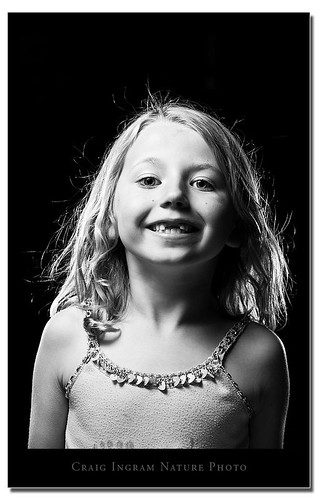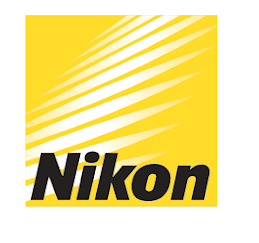A quick follow up from the last post about working out my lighting set-up for an upcoming shoot beforehand. The reason I spent the time working out the lighting a week before the shoot was because I had a preconceived idea how I wanted the light to look. I managed to work out how to get the light I was looking for beforehand so I can spend my time on Saturday fine tuning it, not working it out in the first place.
This also gave me time to process the images and have a look at how they will look after processing. A few things came out of the shoot apart from where to put the lights and what power to have them on. After processing them in Lightroom I was happy with the light but not totally happy with the finished product. So one change I will make for the weekend is to shoot them at 800 ISO. This will do two things, firstly it will conserve flash power as I will be using 3/4 less power each frame which will conserve batteries big time. Very important when working in the field using three SB units and four pocket wizards for a total of 22 AA batteries (I will take 20 fully charges spares too). But the main reason for the ISO bump is to get a grainer look to the images. I will even go to the extent of slightly over sharpening the images to give a edgier look to the files.
Another think I learnt was about my camera. I use flash a lot, mainly off camera in manual mode. I rarely need to use the AF illumination where the flash sends out a few beams of light to help with the auto focus but as this will be shot at night the AF illumination will come in handy but I found out (remembered) that it doesn't work in continuous servo AF mode, it has to be in single servo AF. This only took a minute to remember that but it was a minute of staring at my camera thinking 'What's up?' Doing this in front of your waiting model is not good form so chalk that one down for next time.
So if you have an important project and have the time it pays to practice. ( I used to practice changing film to keep my hand in the game for shooting action and not miss any frames!) This is just as important as keeping you eye in too.
Read more...
Wednesday, 18 February 2009
Practice Makes Perfect- Learning and Remembering Photography Part II
Sunday, 15 February 2009
Being prepared for photography

For those of you who are interested in the lighting set-up it is all shot using Nikon SB units. One shoot through umbrella with a SB-900, camera left, high, as a main light. Two Sb-800s with barn door gobos, either side of subject and she is holding a diffuser (not a reflector, the reflector bounced too much light) to fill in the shadows. This is shot after sunset at f9 1/250 to kill all ambient light and give a totally black background.
Read more...
Monday, 9 February 2009
Nikon still loking after its DX users

Many folk thought that Nikon would phase out DX bodies after the introduction of the FX sized sensor in the D3. Just released is the new 35mm AF-S DX f/1.8 Nikkor which should show that Nikon is fully supporting the continuation of the DX sized sensor and this should prove to be an awesome lens for DX shooters.
I was quite excited when I first heard of the 35mm f/1.8, I would love a fast AF-S lens around 35mm (28mm would be even better) but I missed the fact it was designed as a DX lens. As I am shooting only shooting FX format these days I miss out but it will be a great lens to have in the arsenel for those of you shooting DX cameras. I do have a project comeing up later this year that I am considering using a D90 as my main body and if I do then this little pupple will come along too.
It is definitely one of Nikons stranger looking optics looking more like an enlarger lens (do you remember what they look like?) than a wide angle lens for a SLR. Gone are both the aperture ring (G series) and the distance scale. This allows Nikon to save on price, weight and moving parts. When was the last time you looked at your distance scale anyway? The only time I use mine is when shooting landscapes and that is not what this lens is designed for.
Slated to ship at the beginning of March 2009, click here for more info AF-S DX Nikkor 35mm f/1.8G
Read more...
Tuesday, 3 February 2009
Top 10 Photography (related) Tools from 2008
2008 was a great year to be a photographer. Tonnes of new tools we released to make our lives easier and help us 'create' more. Here is my list of some of the most important things that happened in the world of photography to help us as photographers from last year. These aren't in any particular order just follow the link to see then and why I think they are so great.
- Nikon D3. This camera has opened up new worlds in photographic posibilities. Being able to create huge saleable images at 1600 ISO(I have made 1 meter gallery prints at 2000ISO!) is fantastic. Add to this the great auto focus cababilities of the camera, colour and contrast of the sensor and it all adds up to one of the greatest leaps in digital photography since the dawn of time.
- 14-24mm f2.8 Nikkor Lens. This on a D3 (or D700) is just amazing. When I first picked up the D3 with this lens attached I knew it was for me the wide view and superb sharpness across the zoom range (even at f2.8) is a fantastic effort from the lens makers at Nikon. Couple this with the huge viewfinder on the D3 and you will be hooked.
- Canon 5D MK2. A mid range camera that puts Canon's pro models to shame, bring it on.
- Photoshop CS4. I don't know how they do it but each time Adobe releases an upgrade to Photoshop it is worth the price to grab it. New navigation, upgraded adjustments (the sdjustment panel is great) better panaorama tools and overall improvements in speed all to make my time in front of the computer that little bit easier.
- Nikon D90. This has to be the best value for money around in digital camera. Not the cheepest but what you get for around $1500 is fantastic. 12MP, 5FPS (same as a D3x!) 3 inch LCD and movie mode! Possibly the best travel camera around.
- Intel Core i7 CPU. A strange one to the list but I recently upgraded my main desktop computer to an i7 based machine and the productivity increase has been fantastic. The processing power of this new computer saves me hours per week. Think about it, if you can save just 1 minute per image due to a faster computer then that adds up to hours saved per week which in turn adds up to days saved in front of the computer each month and with big files this new computer saves more than just one minute per file. This leads to less time in the office and more time for shooting which is after all what I love!
- Vista x64 (Service Pack 1). Yes you read it right, I love Vista. It got a really bad wrap at launch due to a number of issues that were all true that I won't go into here but if you are manipulating large files then 64 bit Vista is for you. The advantage of 64 bit (over normal 32 bit Windows) is that it can access more memory (RAM) which leads to faster processing in Photoshop. When stitching panorams Photoshop loves RAM and it flies with the 12GB available under Vista x64, my old 32 bit version would struggle with large panoramas often having to stitch them in multiple stages of even by hand! (x64 can access a maximum 128GB of RAM but I don't have quite that much, yet.)
- Nikon 24mm PC-E - I have been wanting a wide angle tilt shift lens for a long time. Canon has had their's for an age and when it came along in the form of the 24mm PC-E it was a dream come true. No more forgetting to manually stop down the aperture it dose it all automatically using electro magnets (E). Now that is clever.
- Lightroom 2(.2) Lightroom has been a big part of my workflow since it's creation a couple of years ago and the quick release of version 2 has introduced a bunch of features meaning I have to delve into Photoshop even less. Gradients, local adjustment brush and a bunch of other feature upgrades make it a defenate upgrade for all LR 1 users.
- Nikon SB-900 Speedlight. Nikon have always had a fantastic flash system and this has been added two recently with the SB-900, more powerfull, more inteligent and more customisable it is quite a big leap in technology over the 800. Unfortunatly it is a great deal larger too but that I can live with. (I kept my 800s for their smaller size!)
Sunday, 1 February 2009
Panorama and High Dynamic Range Workshop

After a number of requests recently we have decided to run a Panorama and HDR Photography Field Workshop. This Adelaide based trip in late March (Date TBC) will cover all the details of how to capture and process images for Panoramic and HDR shots. The day will begin with a photo-walk starting at the Festival Theater where we will learn about 'seeing' and 'designing' panoramic compositions.
We will wander the city street shooting, talking and learning all the finer details of how best to capture both panoramic and HDR images. During lunch we will concentrate on the computer side of the process, how to stitch panoramas to create various final outputs from straight panoramic images to polar panoramas (see below) and Flash and Quicktime VR movies.
We will also take this time to go through the process of HDR creation using Photoshop and Photomatix. The afternoon will again be spent shooting some more, creating panoramic and HDR images of the Adelaide City Streets and surrounding areas.
While we haven't finalized the details of the course yet we do expect the demand for to be high so if you are thinking that you may want to spend the day with us please get in contact workshops@craigingramphoto.com.au and we will put you on an no obligation first come first served wait list. More details to be confirmed later this week.
Happy Snapping!
Read more...
